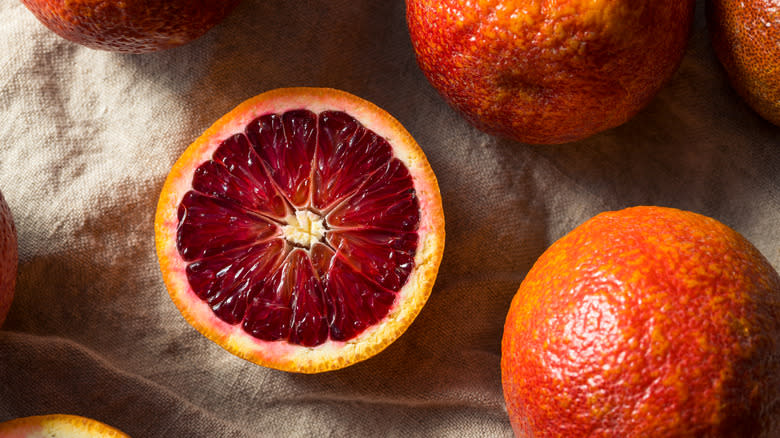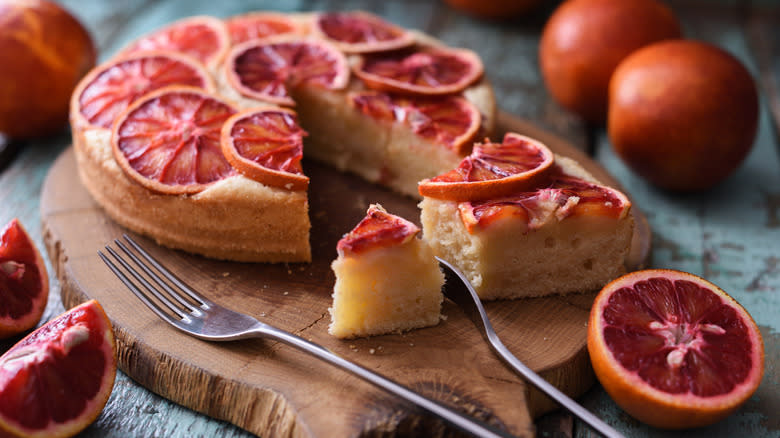The Reason Blood Oranges Are A Deep Shade Of Red

If you've ever cut open a blood orange, you'll immediately notice how beautiful the color is. But you may have also wondered: Where does the red color come from? As it turns out, blood oranges contain a chemical pigment called anthocyanin, which produces a red color. Anthocyanin — which is also responsible for the colors of raspberries and blueberries — develops when the oranges are grown in climates with warm temperatures during the day but cool temperatures at nighttime. When the anthocyanin develops, it starts near the peel of the orange, then makes its way along the edges of each orange slice, then moves inward into the flesh.
Because of this, the red coloring can differ from blood orange to blood orange. Some may be merely streaked with red, while others are fully red -- this depends on the season and when they are harvested.
There are three varieties of blood oranges: Taroccos, Moros, and Sanguinellos. Taroccos have the strongest and sweetest flavor while Moros have the most vibrant color and Sanguinellos boast a berry-like bite.
Read more: 13 Simple Tricks To Pick The Best Fresh Fruit Every Time
How To Use Blood Oranges In Food And Drink

As for how the taste of blood oranges differs from the typical orange we find in the grocery store (often, navel oranges), blood oranges are a bit sweeter and more floral than their navel orange counterparts with a touch of tartness. Additionally, the blood orange is typically juicier than the navel orange.
Much like navel oranges, blood orange can be integrated into both sweet and savory dishes, as well as drinks. For a savory option, you can infuse blood oranges into your favorite creamy pasta dish — this will give the meal a tangy-sweetness. The juice from blood oranges can also be used as an ingredient in sauces or salad dressings, which is a way to bring in its bright flavor without making the blood orange the star of the show. For some sweet options, you can make a blood orange cake, a blood orange tart, or a chocolate-blood orange pots de crème.
Naturally, it also makes for a great cocktail ingredient. You can swap out regular orange juice for blood orange juice in a tequila sunrise for a different take on the classic drink or whip up a blood orange sour.
Read the original article on Tasting Table.
Solve the daily Crossword

